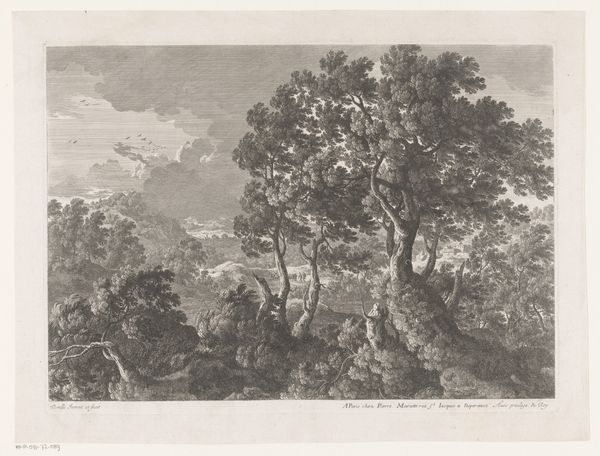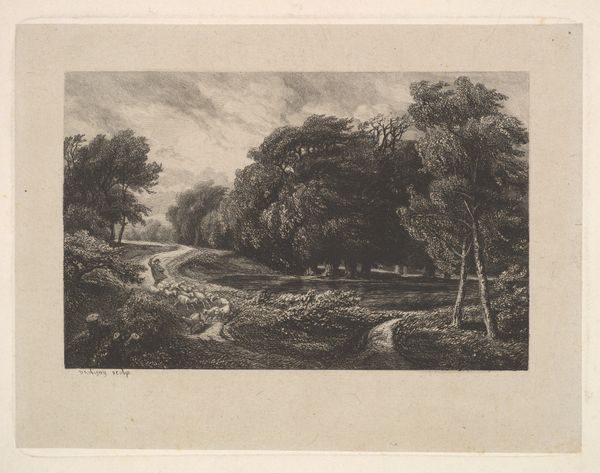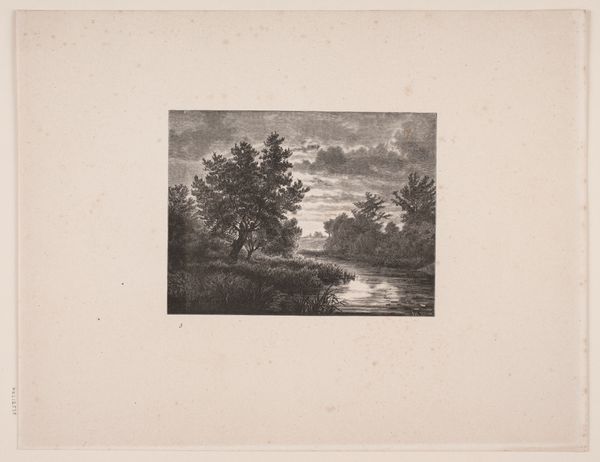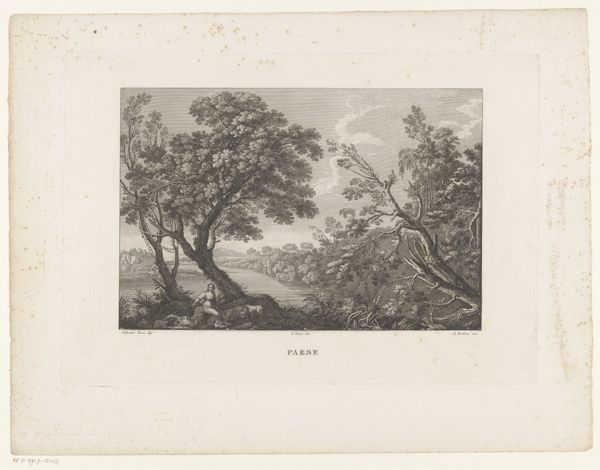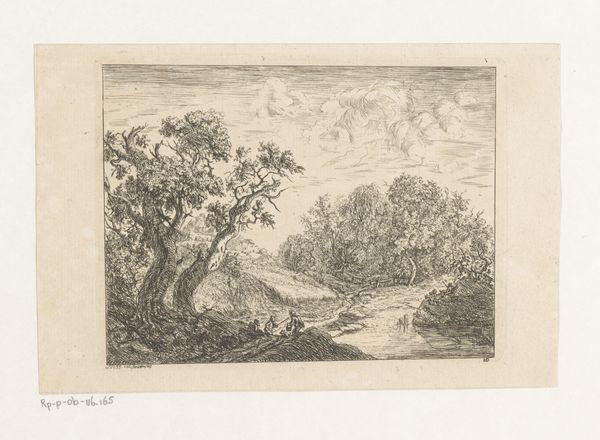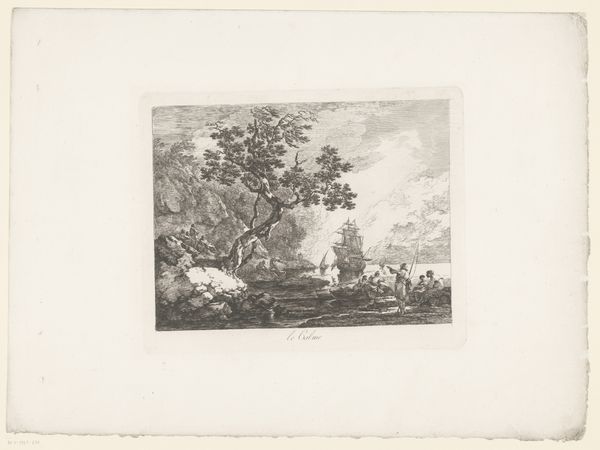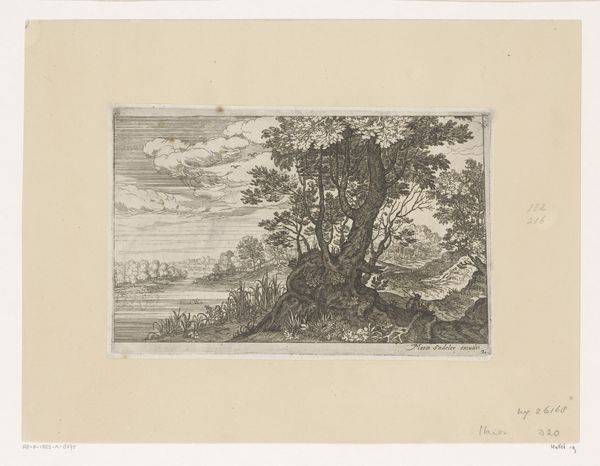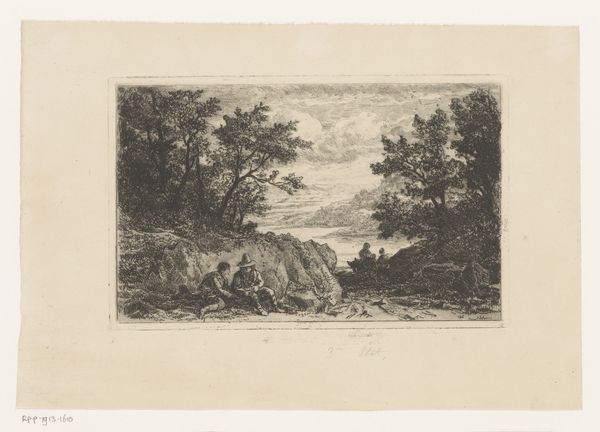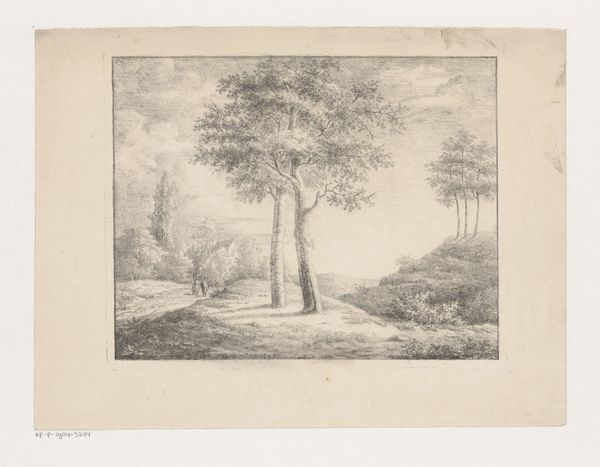
Dimensions: 318 × 432 mm (image); 415 × 507 mm (chine); 427 × 520 mm (plate); 565 × 662 mm (sheet)
Copyright: Public Domain
Editor: We’re looking at Johann Wilhelm Schirmer’s "The Large German Landscape," created in 1841 using etching on paper. The intricate details and contrast give it a somewhat melancholic mood. What do you see in this piece? Curator: Beyond its aesthetic qualities, I see this landscape as a powerful statement about German identity and Romanticism's complex relationship with nature and nationhood. Consider the context: 1841. Germany was not yet a unified nation but a collection of states yearning for cohesion. How does Schirmer utilize landscape to speak to this desire for national identity, or even to critique it? Editor: I hadn't thought about the political implications. Curator: Note how nature is both idealized and wild. This tension mirrors the broader social anxieties of the time, as industrialization began transforming the landscape and disrupting traditional ways of life. Where do you see the elements of “idealized” vs “wild?" What might that opposition suggest about Schirmer’s concerns regarding progress? Editor: Well, the overall composition looks ordered and picturesque, like an ideal. But on closer inspection, individual details feel rougher, more untamed, perhaps reflecting a resistance to that ideal? Curator: Precisely. Schirmer uses the detailed etching to express that push and pull. What we might initially perceive as simply beautiful actually holds layers of commentary about cultural and historical anxieties tied to homeland. This dialogue with art history opens new avenues for thinking about Romanticism, nationalism, and their intersection in the artwork. Editor: I will never look at landscapes the same way. There is so much history and meaning embedded within them! Curator: Indeed. Seeing art as embedded in broader narratives lets us address complex social issues of the past and present.
Comments
No comments
Be the first to comment and join the conversation on the ultimate creative platform.
